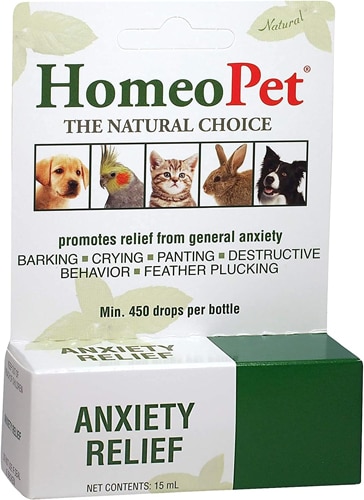[vc_row][vc_column][vc_column_text]You step out of your house to grab coffee and run a few errands, and by the time you return, your dog has chewed through a doorframe, shredded a throw pillow and howled like a banshee. You weren’t gone long, but to your pet, it might as well have been forever. This is the turbulent world of pet separation anxiety, a behavioral disorder that’s far more than just chewed-up slippers.

Separation anxiety a sign of deep distress rooted in fear and attachment. It occurs when a pet, typically a dog—although cats can experience it too—panics upon being left alone or separated from human company. It is also described as a phobia of isolation or “isolation distress” that triggers extreme stress.
Common signs of dog separation anxiety include:
- Destructive chewing, scratching, or digging
- Excessive barking, whining, or howling
- Anxiety building before you leave
- Accidents indoors—even in potty-trained dogs
- Escape attempts
- Pacing or drooling
- Self-injury (chewing paws, breaking teeth trying to escape crates)
For pet parents who might blame their dog, it’s important to remember that anxiety is not misbehavior or stubbornness or your dog acting out. It’s a full-blown panic response. But why does it happen? And more importantly, how do you help your pet feel safe when you walk out the door?
Potential causes of dog separation anxiety
Separation anxiety stems from over-dependence and an inability to self-soothe. About 20 percent of dogs have it and there is no hard science to say why some dogs develop it and some don’t. But here are some possible factors that could come into play:
- Change in routine. Dogs are creatures of habit. A sudden change, such as returning to work after months of working from home, can be jarring.
- Past trauma. Rescue dogs or those with a history of neglect or rehoming are more vulnerable.
- Overattachment. Pets that follow you from room to room and panic at closed doors may have never learned independence.
- Lack of early socialization. Puppies not gradually taught to be alone may grow into anxious adults.
- Genetics and temperament. Some breeds (like Vizslas, Border Collies, and Labs) are naturally more people-oriented. But any dog can develop it.
As mentioned, cats can suffer too, especially those who bond strongly with one person. In cats separation anxiety shows up differently, however. Cats might act aloof, but their stress can manifest as over-grooming, urinating outside the litter box, or hiding for hours.
One of the biggest challenges with identifying separation anxiety correctly is that bored dogs can display very similar behaviors to anxious ones. The difference is persistence, consistence and insistence. Dogs with isolation distress bark, chew and engage is destructive behaviors with more intensity and for a longer duration than bored dogs.
Pandemic puppy + hyper-attachment = perfect storm
If your dog was adopted during lockdown, you might have a small shadow that follows you around. Post-pandemic, with routines disrupted and pets now more attached than ever, separation anxiety is increasingly common. Veterinarians have reported a noticeable spike in separation anxiety cases since 2021, and behaviorists now warn that "re-entry syndrome" in dogs is a real phenomenon. Pandemic pets grew up with their humans constantly present, so when you vanish behind the front door, they don't think,
she’s just running errands. They think,
she’s never coming back.
How to help: Careful training, not tough love
First, let’s clear up a pervasive dog training myth. Letting your dog “bark it out” won’t help. You can’t discipline anxiety out of a pet any more than you can scold a friend out of a panic attack. Barking that comes from fear continues as long as the fear continues, often spiraling instead of eventually dying down. A more effective approach, experts say, is a mix of behavioral training, environmental support, and lifestyle tweaks:
Teach independence while you're home
Ironically, the work starts
before you leave. Many dogs panic not at being alone, but at being
separated from you.
- Practice "micro-separations": close the bathroom door. Go to another room.
- Give them a chew in a crate or on a mat, then walk away.
- Gradually stretch the time apart, building their tolerance.
Try a gradual approach to separation
Begin by making your absence less of a big deal.
- Start with brief absences—literally seconds. Leave, come back, no drama. Repeat.
- Gradually increase the duration, always keeping your pet below their panic threshold.
- Use counterconditioning by pairing departures with good stuff: a stuffed Kong, a chew toy, or a puzzle feeder. The idea is to rewire their brain to associate your leaving with positive things.
Go slow. If your dog is pacing after 30 seconds alone, they’re not ready for five minutes. A brain stuck in fear takes time to heal.
Keep goodbyes and reunions low-key
It can be hard to leave your wide-eyed bestie. But if you turn every goodbye into a dram-filled sob-fest, you reinforce their anxiety.
- Leave calmly. No cooing, no guilt-tripping.
- Come home, wait a minute. Let them calm down, then offer affection.
This helps them regulate and learn that departures and returns are normal.
Use environmental soothers
A few well-chosen tools can support your dog’s ability to individuate with less distress.
- Puzzle toys: Occupy their brain while you’re out.
- White noise: Reduces jarring sounds.
- Adaptil diffusers: These synthetic pheromones mimic a mother dog's calming scent and comfort.
- Crate training (if done right): Creates a safe space for dogs, not a prison.
Some dogs do better with a view of the outside world. Others prefer to be tucked away. Become familiar with your pet’s style.
Exercise, routine and positive stimulation
A bored, under-exercised dog is a ticking time bomb.
- Ensure plenty of daily exercise—mental and physical. A tired dog is a calmer dog.
- Keep a consistent schedule. Feed, walk, and train them around the same time each day.
- Add training sessions to build confidence and mental flexibility.
When necessary, try medication or a professional help intervention
For severe cases, consult a veterinary behaviorist. Some dogs may need short-term anti-anxiety meds like fluoxetine (Prozac) or clomipramine. Think of it like putting training wheels on the bike, helping to stabilize their mood while you rewire their anxiety response.
What not to do for separation anxiety
- Don’t punish destruction—it’ll make the anxiety worse.
- Don’t get another pet hoping it will “cure” the issue. They often bond with you, not other animals. And sometimes, in the case of dogs, they don’t always get along.
- Don’t crate them if they panic in crates—you’re not confining the problem; you’re intensifying it.
Although daunting at first, separation anxiety can often be successfully treated. However, the path is rarely quick. It’s slow, non-linear, and requires patience. Ultimately, helping a pet with separation anxiety isn’t about getting them to behave, it’s about helping them
feel safe. At the root of every bark, scratch, or tearful whine is a creature asking:
Will you come back? And your task as their friend is to teach them that they’re safe in the world, even when you’re not there.[/vc_column_text][/vc_column][/vc_row][vc_row][vc_column][vc_text_separator title="Featured Products" border_width="2"][vc_row_inner equal_height="yes" content_placement="middle" gap="35"][vc_column_inner width="1/3"][vc_single_image image="185891" img_size="full" alignment="center" onclick="custom_link" img_link_target="_blank" css=".vc_custom_1751244661387{padding-right: 7% !important;padding-left: 7% !important;}" link="https://www.vitacost.com/chew-heal-anxiety-stress-relief-supplement-for-dogs"][/vc_column_inner][vc_column_inner width="1/3"][vc_single_image image="185890" img_size="full" alignment="center" onclick="custom_link" img_link_target="_blank" css=".vc_custom_1751244677145{padding-right: 7% !important;padding-left: 7% !important;}" link="https://www.vitacost.com/zesty-paws-hemp-calming-composure-supplement-for-dogs"][/vc_column_inner][vc_column_inner width="1/3"][vc_single_image image="185892" img_size="full" alignment="center" onclick="custom_link" img_link_target="_blank" css=".vc_custom_1751244694471{padding-right: 7% !important;padding-left: 7% !important;}" link="https://www.vitacost.com/ready-pet-go-calming-relaxing-chews-for-dogs"][/vc_column_inner][/vc_row_inner][/vc_column][/vc_row]
 Separation anxiety a sign of deep distress rooted in fear and attachment. It occurs when a pet, typically a dog—although cats can experience it too—panics upon being left alone or separated from human company. It is also described as a phobia of isolation or “isolation distress” that triggers extreme stress.
Separation anxiety a sign of deep distress rooted in fear and attachment. It occurs when a pet, typically a dog—although cats can experience it too—panics upon being left alone or separated from human company. It is also described as a phobia of isolation or “isolation distress” that triggers extreme stress.




